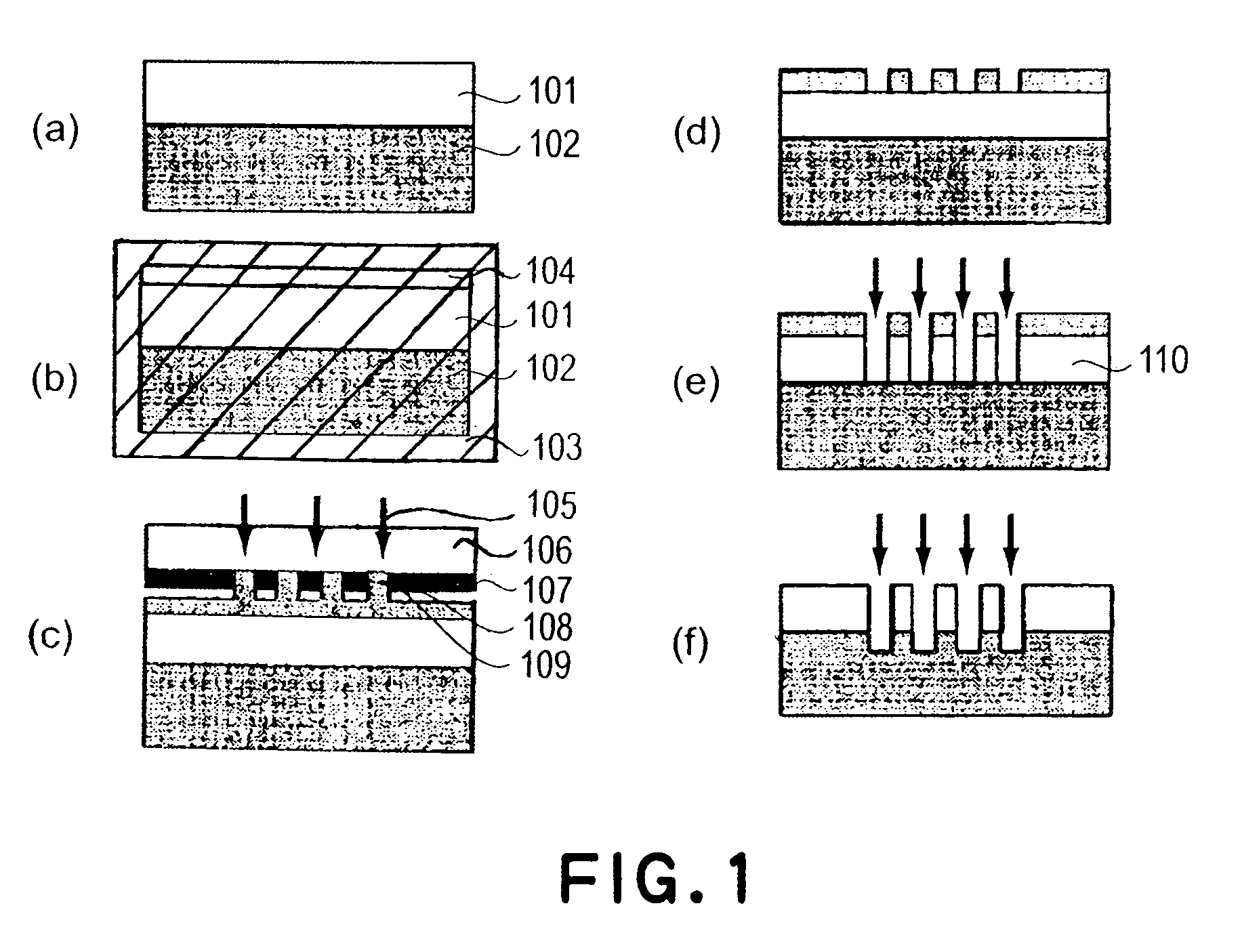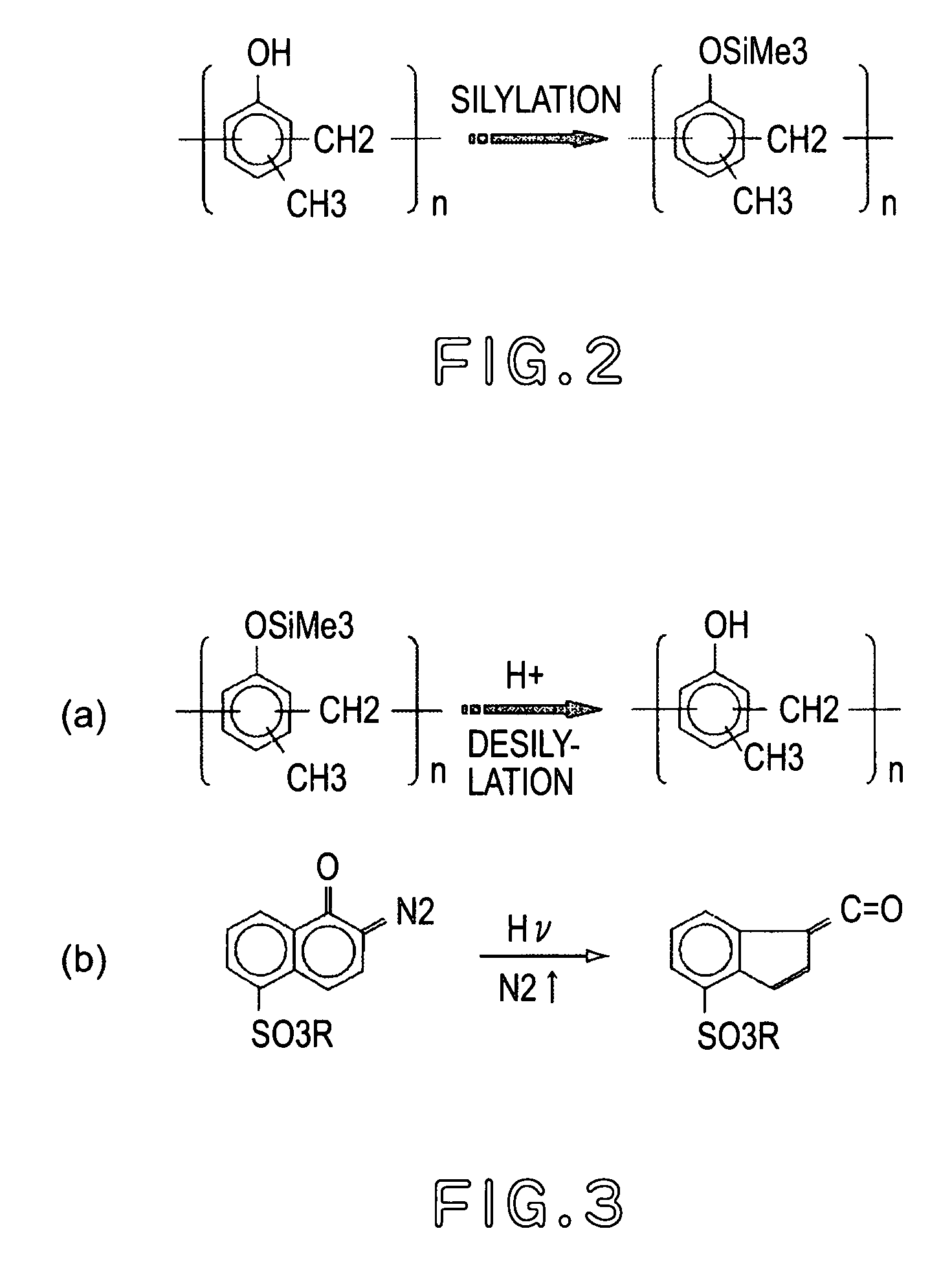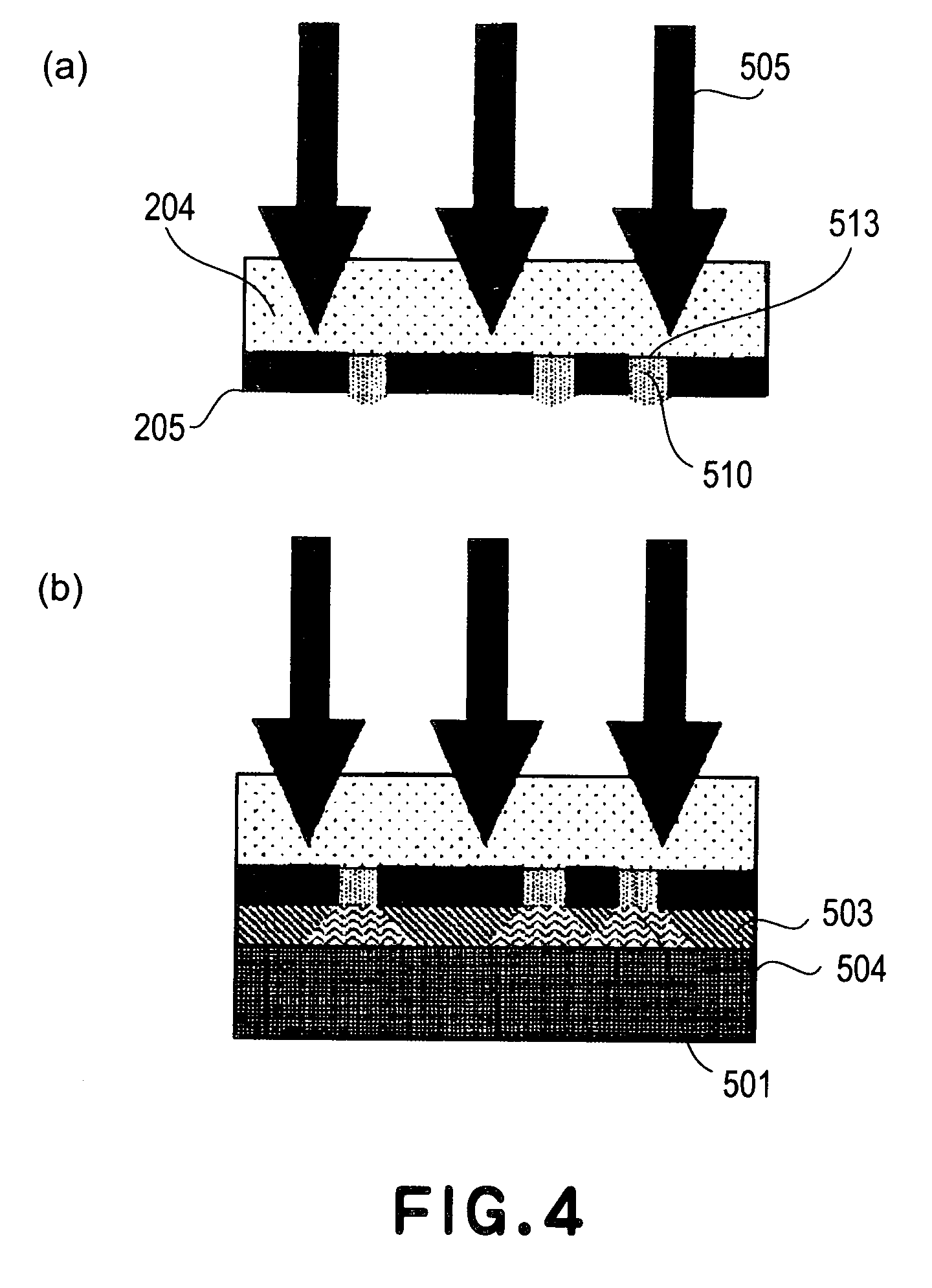Near-field exposure photoresist and fine pattern forming method using the same
a technology of near-field exposure and fine pattern forming, which is applied in the direction of photosensitive materials, instruments, photomechanical equipment, etc., can solve the problems of reducing process tolerance, failure of transfer onto the substrate, and increasing the width of the formed pattern, and achieves high contrast
- Summary
- Abstract
- Description
- Claims
- Application Information
AI Technical Summary
Benefits of technology
Problems solved by technology
Method used
Image
Examples
example
[0071]In order to form a 50 nm L / S (line and space) pattern of a 100 nm-thick upper Si layer on SiO2 layer of SOI (silicon on insulator) substrate, a photoresist was formed on the SOI substrate by spin coating.
[0072]The photoresist contained an alkali-soluble novalac resin, a photosensitizer having a naphthoquinonediazide group, triazine and a sensitizer.
[0073]With respect to the thickness of the photoresist layer, it is necessary to provide the photoresist layer on the SOI substrate with a thickness of to less than 50 nm in view of a ratio of etching resistance between Si and the photoresist with respect to a mixture gas of CHF3 and SF6 since Si is etched with the mixture gas. Further, in order to form the 50 nm L / S pattern by near-field exposure, a width of a small opening of the photomask used in the near-field exposure is approximately 20 nm. For this reason, a thickness of the silylation portion is determined as 20 nm.
[0074]When a 20 nm-thick silylation portion is used as the p...
PUM
| Property | Measurement | Unit |
|---|---|---|
| wavelength | aaaaa | aaaaa |
| temperature | aaaaa | aaaaa |
| temperature | aaaaa | aaaaa |
Abstract
Description
Claims
Application Information
 Login to View More
Login to View More - R&D
- Intellectual Property
- Life Sciences
- Materials
- Tech Scout
- Unparalleled Data Quality
- Higher Quality Content
- 60% Fewer Hallucinations
Browse by: Latest US Patents, China's latest patents, Technical Efficacy Thesaurus, Application Domain, Technology Topic, Popular Technical Reports.
© 2025 PatSnap. All rights reserved.Legal|Privacy policy|Modern Slavery Act Transparency Statement|Sitemap|About US| Contact US: help@patsnap.com



